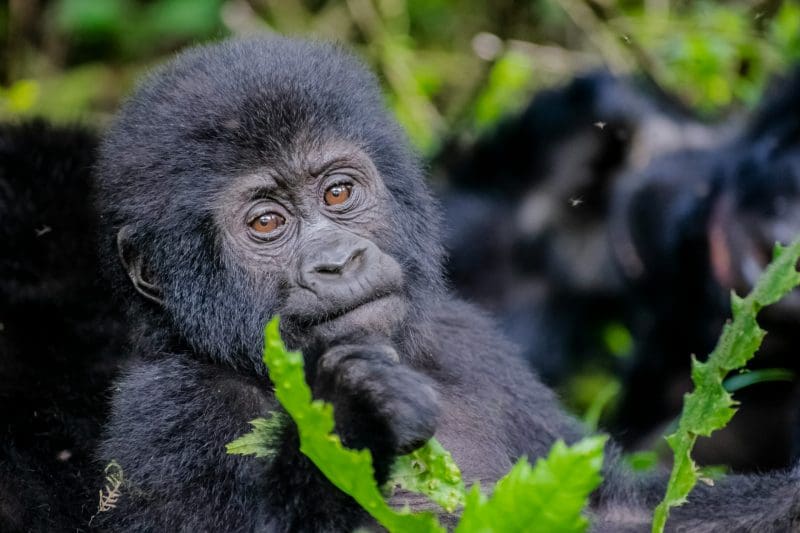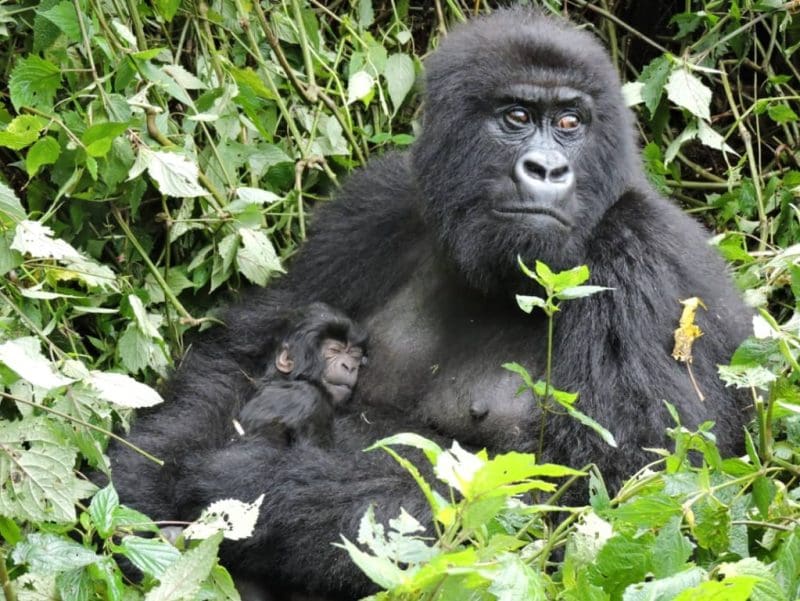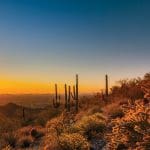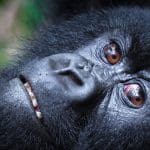Uganda to add another US$100 per trek on July 1
IAN STALKER
Tour operators that send people on Ugandan gorilla treks say that Uganda’s recent decision to raise the price for tourists wanting to see the large primates shouldn’t be seen as a significant price hike and add that the added cost will amount to money well spent.
The Uganda Wildlife Authority has announced that the price for the treks will rise from US$700 to US$800 on July 1 but tour operators note that the price is significantly below what similar gorilla treks in Rwanda cost.
“It’s the first price increase for the gorilla trekking permit in Uganda since 2020, going from US$700 to US$800. In comparison, the cost of permits in Rwanda increased in 2017 to US$1,500 per person per visit, and it’s still a coveted destination for wildlife lovers. Each traveller contributes to the conservation of mountain gorillas and the support of the local economy. The funds are distributed to many people, including rangers, guides, and porters. Every day, hundreds of local people have the opportunity to work in the protected forests with the enigmatic great apes,” says Caroline Mongrain of World Expeditions.

“While the mountain gorillas are still endangered, conservation efforts have found success. The population has grown from 780 individuals in 2010 to over 1,000 individuals today. Limited mountain gorilla trekking permits are available in Uganda and Rwanda. The only other place to observe them in the wild is in the Democratic Republic of the Congo, which is deemed notoriously unsafe for tourism.”
Moira Smith of Goway Travel agreed that the Ugandan expeditions will remain reasonably priced.
“It’s not just gorilla permits that have increased, but also the chimpanzee permits,” she reports. “Gorilla trekking, in both Uganda and Rwanda, is a very important product in Goway’s portfolio. And we know that most of the fees go directly back into the preservation of the gorillas, their habitat, research, anti-poaching and monitoring. Uganda’s fee, increased from US$700 to US$800, is relatively inexpensive compared to the cost of a gorilla permit in Rwanda.”

Smith said she’s confident those Goway sends on gorilla treks will find it incredibly moving.
“Spending an hour in the company of these incredible animals is one of the most special experiences,” she continues. “They can’t survive in captivity and to sit a few meters from a 400-pound silver-back and his family is a life-changing experience.”
Meghan Verbeek, product category manager-wildlife Intrepid, also said the price hike isn’t unreasonable and the added money will be put to good use.
“There are very few areas in the world with populations of gorillas left in the world and along with Rwanda, one of them is deep in Uganda’s Bwindi Impenetrable Forest. Intrepid has a range of different trips that visit each of these unique places,” Verbeek said.

“A close encounter with gorillas in Uganda is an extraordinary experience and for many, traveling to see these magnificent animals firsthand is a once in a lifetime trip,” she said. “They have planned for years to make it happen and we don’t foresee this increase in cost making or breaking their decision to join one of our tours. I’ll also note, the permits in Rwanda are US$1,500 compared to US$800 in Uganda, so it’s the more affordable option even with the price increase.”
Intrepid books its gorilla trekking permits well in advance, and since it’s already purchased all its permits for this year, the increase won’t affect its 2024 prices. It will affect 2025 prices, however.
“Travellers should feel good about paying for permits as the money the government and local communities make off gorilla tourism is vital to the species’ protection and survival,” she noted. “Trekking fees are a significant contributor to conservation fundraising. In Uganda, approximately 80% of the National Wildlife Authority’s overall budget stems from gorilla tourism, financing a substantial portion of wildlife and habitat conservation efforts across the country.”

Verbeek reported that she’s gone on one of the gorilla treks, which wowed her.
“On the experience itself, having personally trekked with gorillas, I can say with certainty that it was the most remarkable travel experience of my life,” she continued. “From the first moment when I looked up and met the eyes of a silverback gorilla only meters away, I had tears of joy, and they didn’t stop for the entire hour. While watching a mother snuggle her face into her baby while nursing, I was just awestruck by the similarities between humans and gorillas. It was so humbling to know that despite their immense size and strength, they were allowing us to share their space without any barriers between us.
“Among our gorilla trekking tours in Uganda is the very special Premium Rwanda and Gorillas of Uganda trip. In the lead up to meeting the gorillas, travellers on our tour also have a fireside chat with a field veterinarian from the Gorilla Doctors, which is an experience exclusive to Intrepid. The Gorilla Doctors are the only organization in the world dedicated to saving the mountain and eastern lowland (Grauer’s) gorilla species, one gorilla patient at a time, using veterinary medicine and science. They monitor the health of gorilla groups to ensure the early detection of disease and injury and stage medical interventions when gorillas suffer from human-induced or life-threatening trauma or disease. The visit really adds great context around the role gorillas, gorilla conservation and gorilla tourism play in both countries.”

Meanwhile, Mongrain praised Ugandan tourism in general, labelling Uganda one of her favourite destinations.
“The landlocked African country is home to a vast number of wildlife species, including chimpanzees and tree-climbing lions, with its 60 protected areas attracting visitors from all over the world,” Mongrain says. “Travellers are crucial in developing sustainable tourism activities and wildlife conservation efforts.
“Uganda is the perfect alternative to the mainstream wildlife safari destinations and a great example of tourism doing good.”

















